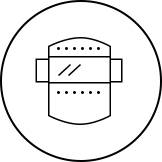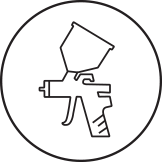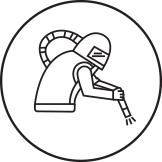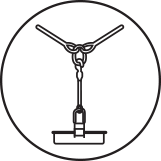IRATA Training
The IRATA height system is a safe working method at a height where the industrial rope and other adequate equipment are used for access to the workplace, safety at work and safe removal from the site.
The IRATA International organization’s task is to monitor and apply the procedure of procedures that the members are obliged to follow and apply in order to maintain a safe working system at any time. This system of work separates members of IRATA International from those who are not part of such organized and rigorous schemes. The method of working with rope as a rounded system must imply an equal and harmonized application of planning, organization, competence and adequate equipment for work.
The advantage of using the Rope Access method is to look briefly in a quick and safe approach to operation and surveillance in order to perform a specific work assignment, where the work itself is performed in a safe way with minimal impact on the environment and the work environment. Another advantage relates to reducing the risk of work per hour and therefore costs in relation to other approaches.
Planning, organizing and carrying out work with the minimization and elimination of potential accidents and injuries at work without damaging equipment, property, and environment, is the primary goal of work from the industrial rope.
APPLICATION FOR ACCESS METHOD
(Doing business using an industrial rope)
INSTALLATION, TESTING, INSPECTION
• Inspection and testing of structures
• Reviews of compounds
• Non Destructive Testing (NDT)
• Work in a spatially limited working environment (pilots, towers, high parts of ships)
• Installation of radar and satellite systems
CONSTRUCTION AND REPARATION
• Reparation of concrete parts on bridges and high buildings
• Reparation of buildings of cultural and historical significance under the protection of the state
• Renewable energy sector – wind generators, industrial roof solar systems
• Setting the sealing masses as well as removing them
• Subsequent repairs
• Bearing replacement
• Installation and servicing of a flame pole on oil platforms
CLEANING AND FARBING
• Baking all available methods
• Painting with a gun, brush
• Various welding systems
• Complete preparation of the painting surface – anti-corrosion protection
FACILITIES OF MAINTENANCE
• Cleaning of windows, constructions, inaccessible parts of buildings
• The process of glazing, inspection, and repair of glass surfaces
• Adequate maintenance and necessary repairs
QUALIFICATIONS OF IRATA TECHNICIAN
Level 1 IRATA technician
The holder of the first level of the IRATA certificate (Level 1) is qualified to perform a limited number of tasks assigned by the employer and under the supervision of the holder of the third level of the IRATA certificate (Level 3). Some of the actions for which the L1 technician may be responsible:
- Inspection of own equipment for working at altitude using an industrial rope
- Assignment in rigging and non-standard operating areas under the supervision of a higher holder of a higher level of IRATA certificate (L2 and L3)
- Acquiring life-saving and safe descent actions to securely knowing the towing and transferring equipment used in the process
- The L1 technician is not authorized to supervise other IRATA technicians.
Level 2 IRATA technician
The holder of the second IRATA certificate (Level 2) is capable of performing all actions for which the L1 technician is capable, also being able to independently perform the rigging procedure with adequate equipment and an industrial rope (with the supervision of the L3 IRATA technician).
The L2 technician is also familiar with the legal provisions, security procedures and quality control of the performed activities using equipment for working at altitude and industrial rope.
Level 3 IRATA technician
Some of the actions that the L3 technician may be responsible for:
- Supervision of the place of performance of all projects related to work with industrial rope
- Knowing all relevant techniques and procedures
- Ability to demonstrate all the skills and knowledge required for technicians L1 and L2 of any IRATA training
- Possession of relevant knowledge and techniques of the process of rescuing injurious colleagues / actors
- Possession of the relevant first aid certificate that guarantees that it has undergone first aid training
- Possession of knowledge related to IRATA certification
- Possession of knowledge related to IRATA training, testing and certification
- Knowledge of the ICOP (International Code Of Practice) document issued by the IRATA Organization.




